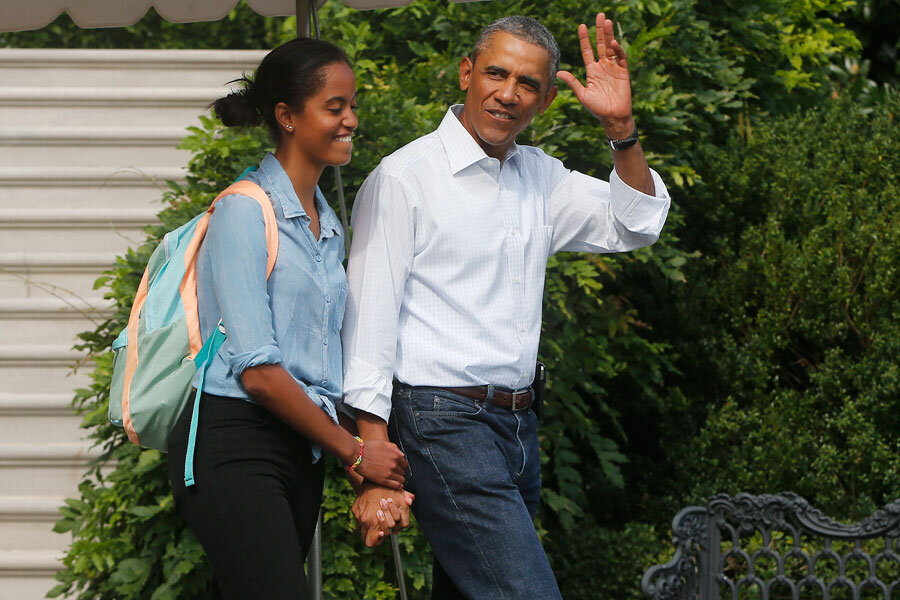How much does Malia Obama tip? A brush with American royalty.
Loading...
| Washington
My daughter’s voice was breathless on the other end of the phone: “I just waited on Malia Obama!”
How cool! How Washington! I thought.
What did Malia eat? What did she wear? Who was she with? And most important of all, how much did she tip? My questions spilled forth, as I cooled my heels in the White House briefing room waiting for a briefing that was eventually postponed.
My daughter, Becca, has been waiting tables at Open City café for a few weeks before heading back to college, and regularly encounters interesting people. The restaurant is in the Woodley Park neighborhood of Washington, well situated between two major hotels, and gets people from all over the world. But Malia Obama, a local girl who goes to Sidwell Friends School nearby, is her coolest customer yet.
So here’s the skinny: Malia had frozen chai and eggs Benedict. She wore flip-flops, cutoff jean shorts, and a Georgetown T-shirt. She was with two girlfriends – and it was one of her friends who picked up the check. The tip: $8 on a $45 bill.
“Not so bad considering they’re teens!” said Becca, herself just a few years older than her customers.
The girls sat inside, while the Secret Service detail sat outside on the patio keeping watch.
“I don’t think she wanted them close by,” Becca surmised.
So what’s Malia like in person? Shy? Outgoing? Becca says she seemed “perfectly normal, your average teenager.” Though very tall. And the president’s daughter.
This correspondent once stood in line behind Chelsea Clinton at a Starbucks near Sidwell back in the 1990s. She ordered a mocha, I think. But I didn't interact with her. Despite my profession, I'm not big on bothering famous people, especially when they are famous only because of their parents. So I'm proud of my daughter for interacting with D.C.'s most famous 16-year-old without panicking or spilling frozen chai on her lap.
And I'm glad to know that Malia seems to be a normal teenager, despite growing up in a fishbowl. She and her friends appear to have been well trained. Because in Washington, you never know when your waitress is going to be the daughter of a White House correspondent.









